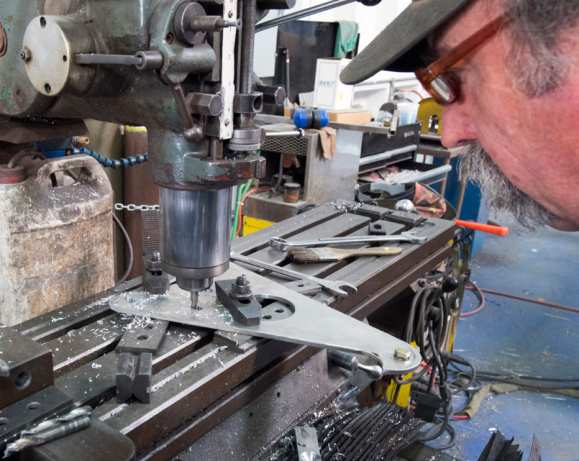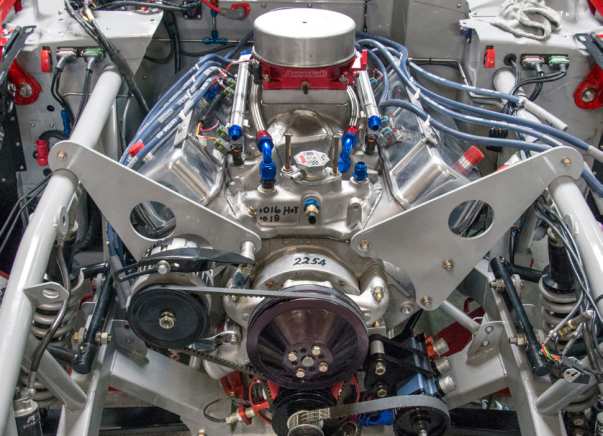Engine Mounts

Both engine modes (Land Speed/Top Speed [Elephant] and Road Race) utilize the conventional engine stands that mount on the sides of the block, but that’s just not enough to contain the power being dished out. During
the media-blasting process, it was revealed that one of the engine mounts had a hairline crack. From the Elephant’s day one in June 2013, it has used a pair of quarter-inch-thick aluminum motor plates, which, ironically, resemble elephant ears. These motor plates attach to the chassis down low and are solid. The use of the Component Drive Systems’ blower drive assembly relocates the dry-sump pump forward, so these motor plates work great. Since these motor plates should have kept the conventional side engine mounts from cracking, they deduced that the Road Race engine setup was probably the culprit for the cracking. This made them decide to install additional engine mounts for all Road Race mode engines.
They originally looked at using motor plates like the Elephant engine, but the dry-sump pump location on the non-supercharged engine setup interfered with the driver’s-side motor plate. Not wanting to compromise the strength of the motor plate, they designed separate motor plates for this setup. Since Road Race motor
plates are backup mounts for the engine stands, they only mount to the cylinder heads instead of mounting all the way through the water pump passages and to the face of the block. Dave worked his magic on the mill and turned out some new mounts made from quarter-inch aluminum.
Since they taper inward from the top, and the mounting tabs on the chassis are behind the motor plates, they can remain bolted to the engine during future engine removals. There’s always an eye toward easing the time spent on engine swaps.
